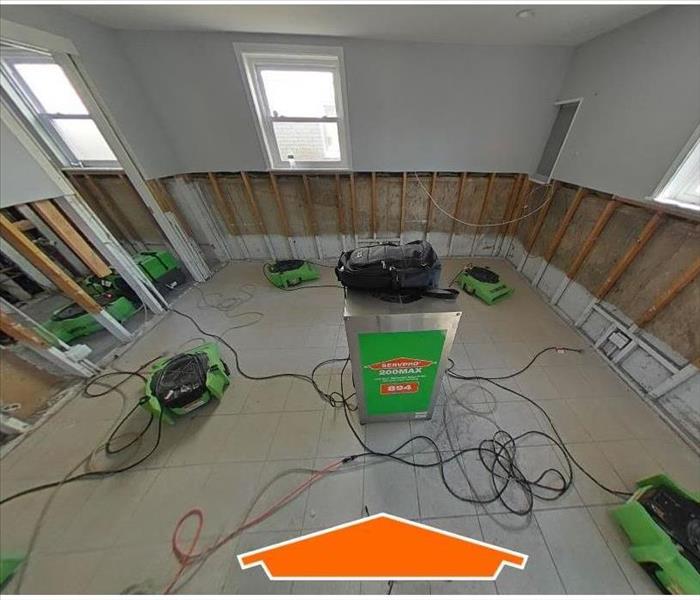The Importance of Air Quality Testing After Fire Damage
4/17/2024 (Permalink)
 In this blog, we will explore why air quality testing is crucial after fire damage and provide insights into how it is conducted.
In this blog, we will explore why air quality testing is crucial after fire damage and provide insights into how it is conducted.
After experiencing a fire in your home, the importance of thorough fire remediation cannot be overstated. One crucial step in the process is air quality testing, which plays a vital role in ensuring that the indoor environment is safe and free from fire-related contaminants. In this blog, we will explore why air quality testing is crucial after fire damage and provide insights into how it is conducted.
Why is Air Quality Testing Important After Fire Damage?
- Identification of Hidden Contaminants: Fires release a myriad of pollutants into the air, including smoke, soot, and chemical residues. These microscopic particles can remain suspended in the indoor air for an extended period. Air quality testing helps identify the presence and concentration of these hidden contaminants, ensuring a thorough fire damage remediation process.
- Assurance of Safety: Fire-related contaminants can pose risks to occupants, even without considering health issues. Air quality testing provides reassurance that the indoor environment is safe for occupants to return. It ensures that the potential for exposure to harmful particles is minimized, promoting peace of mind.
- Documentation and Insurance Claims: Air quality testing provides valuable documentation of the post-fire condition of the indoor environment. This documentation is important for insurance purposes, helping to substantiate damage claims related to the fire incident.
How is Air Quality Testing After Fire Damage Conducted?
- Initial Assessment: Trained professionals, such as the experts at SERVPRO, will conduct an initial assessment of the fire-damaged area to determine the scope of the testing required. This assessment includes evaluating the extent of fire and smoke damage and identifying potential areas of concern.
- Sampling Strategy: Based on the assessment, the professionals will develop a sampling strategy to collect air samples from specific locations. They may also utilize surface swabs to test for residue and soot particles on various surfaces.
- Air Sampling: Air samples are collected using specialized equipment, such as air pumps and collection devices, designed to capture and collect airborne particles. These samples may be collected in specific rooms, near ventilation systems, or within void spaces.
- Laboratory Analysis: The collected air samples are sent to a qualified laboratory for analysis. Trained technicians analyze the samples to determine the presence and concentration of fire-related contaminants, such as soot, smoke particles, and volatile organic compounds (VOCs).
- Interpretation of Results: Once the laboratory analysis is complete, the professionals will interpret the results and provide a comprehensive report. This report will outline the findings, including the identification of any contaminants and their concentration levels. It will serve as a guide for implementing appropriate fire damage remediation measures.
Air quality testing after fire damage is of utmost importance to ensure the safety and well-being of occupants returning to a fire-affected property. It helps identify hidden contaminants, assures safety, and serves as documentation for insurance claims. Expert professionals, like those at SERVPRO®, conduct thorough assessments, develop sampling strategies, and analyze air samples to provide accurate results. By investing in air quality testing after fire damage, you can have the peace of mind of knowing that your indoor environment is safe and that the fire damage remediation process will be thorough and effective.



 24/7 Emergency Service
24/7 Emergency Service